Article
Lister's London: A Walk Through Medical History
Author(s):
To journey through the life and times of Lord Joseph Lister, a surgeon who pioneered the use of carbolic spray for antisepsis, is to venture through some of the most hallowed medical halls in Europe.
Photography by the author
The use of Joseph Lister’s carbolic spray for antisepsis in the second half of the 19th century gave results so monumental most medical writers describe the history of surgery as either pre-Listerian or post-Listerian.
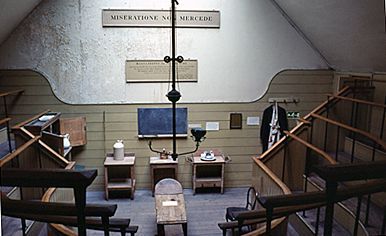
Although Joseph Lister’s seminal work in surgical antisepsis was done in Scotland, he started and ended his medical career in London. Thus there was quite a buzz in 1956 when a boarded-up 19th century operating room was discovered at the old St. Thomas’s Hospital. What would it disclose? The original hospital was built about 1106. The woman’s ward in the old hospital abutted the parish church and in the early 19th century the hospital created an extra operating room by expanding into the church’s attic. When the hospital moved, that space with its contents was covered up and made the rear wall of a post office. A local historian poking about in this space discovered the OR in 1956. The Old St. Thomas’s Operating Theatre was opened to the public in 1962 a century after the space had been walled off.
This was the hospital of pioneering nurse Florence Nightingale and there is a sense of excitement amongst the visitors when they enter this relic of the past. A sign hangs on the wall with the legend Miseratione non Mercede (“For compassion not for gain”). The curator addresses the question of Lister’s carbolic spray immediately by producing one and placing it on the OR table and saying, “The theatre closed down in 1862 before Lister first used carbolic.”
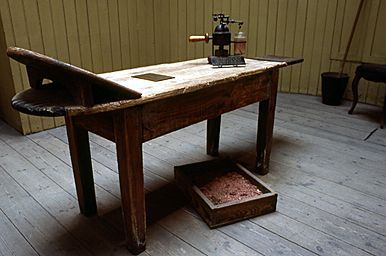
Lister’s research was desperate because, Lister said, “patients on operating tables were exposed to more chance of death than English soldiers on the field of Waterloo.” Puerperal fever itself carried a death rate of 30 percent, despite the impact Ignz Semmelweiss was trying to make in Vienna. Born in 1827, Lister graduated from medical school in 1852. He showed a scientific curiosity early, but before visiting the great clinics of Europe he went north to spend a month at the Edinburgh medical school. That month lasted for seven years. Lister was impressed with the professor of surgery, James Syme. Lister became his assistant, fell in love with his daughter Agnes and married her. Lister’s abilities were so striking that he was invited by Glasgow, the largest city in Scotland, to become its professor of surgery. Glasgow today has been sandblasted of its industrial grime, but there were problems in 1861 for Lister.
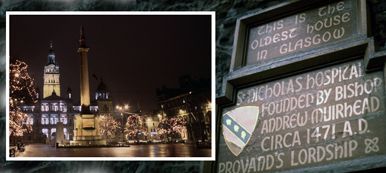
Edinburgh Royal Infirmary was inspired by the spirit of James Syme, but Glasgow -- a gritty, working city -- always claimed, “What you see is what you get.” What Lister got were wards in deplorable condition. Says Kenneth Walker, author and one of Lister’s numerous biographers and himself, a distinguished surgeon, “The spirit dominating the Glasgow Royal Infirmary [then] was not that of a great surgeon but of a lay committee intent only on keeping down costs.”
Sounds familiar?
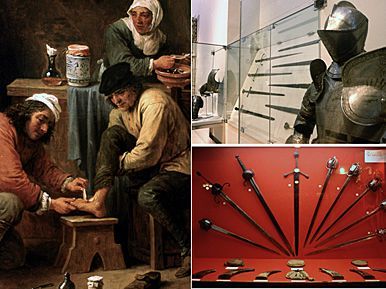
Yet Glasgow, a wealthy ship-building city, was well endowed. Glasgow's Kelvingrove Art Gallery and Museum has one of my favorite paintings by David Teniers the Younger's A Surgeon Treating a Patient’s Foot, and the Burrell Collection has such a fine array of swords and knives it’s no surprise Scottish surgeons took easily to the cutting specialty. Lister’s major work on antisepsis was all initiated in Glasgow, namely being referred to Louis Pasteur the Glasgow professor of chemistry, and contacting the sewage department of the city of Carlisle that was using carbolic to deal with sewage waste. At a British Medical Association meeting in 1867, he was able to announce his wards had remained free of sepsis for nine months.
Lister loved Glasgow. Yet when the most prestigious medical school in Europe called him in 1869, he reluctantly left his Glasgow students and returned to Edinburgh as professor of surgery.

I graduated from Edinburgh medical school in 1958, but had professors who’d spoken with Lister in the autumn of his years -- he died in 1912 -- so all his work on antisepsis is more recent than today’s students might think. Lister’s former house at 9 Charlotte Square in Edinburgh carries a plaque though the Royal Infirmary, where I trained 90 years after him. It bears the dates 1729 to 1870, and remained in use until 2002.
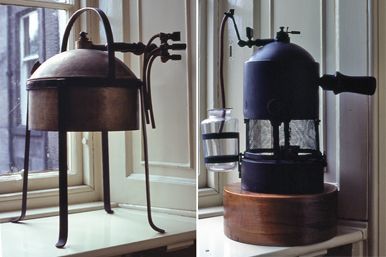
Lister’s original carbolic sprays sat for some time on a window ledge at the Surgeon’s Hall in Edinburgh, about a 10-minute walk from the Royal Infirmary. They are now in a more modern museum in the same location, where a life-size diorama shows the great Lister sitting at his desk while curators -- exhibiting their peculiarly churlish concern -- do their best to prevent visitors from taking photographs!
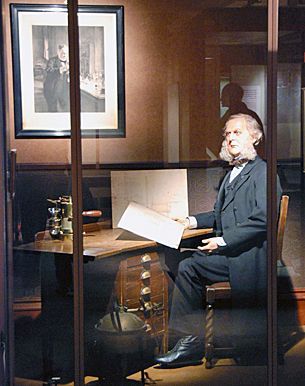
In 1870, Lister operated on Queen Victoria for an auxiliary abscess, and in 1877 King’s College Hospital in London created a special chair of clinical surgery to bring him back to the city where his medical career had started. He went to convert the recalcitrant London surgeons to his viewpoint. In Europe, however, Lister was lionized. At a congress in 1881, his listeners were Pasteur, Rudolf Virchow, Robert Volkmann, Thomas Huxley, and Robert Koch. Lister’s stature was so great Sir Frederick Treves -- who had performed the first appendectomy in England in 1888 -- felt obliged to consult him when King Edward VII developed appendicitis two days before his coronation in June 1901.
Lister’s carbolic vials are on show in the London Science Museum and examples of his carbolic sprays can be seen in numerous medical museums across the world. The one photographed below at the Dittrick Museum of Medical History in Cleveland was bought in Europe by Dudley Peter Allen, MD, in 1872.

Lister abandoned his carbolic spray in 1887, finally understanding that though it cut down infection it was damaging tissue. He realized, as time passed, asepsis as pioneered by William Halsted offered an improvement. He welcomed progress when Ernst von Bergmann in Berlin developed the use of silk sutures and rubber gloves.

Lister became Sir Joseph Lister in 1883 and Lord Lister in 1897, though he wasn’t interested in acclaim. When his nephew, Sir Rickman Godlee, another of his many biographers, asked permission to write his biography, Lister agreed if Godlee left his private life alone. That was almost funny! Lister had no life beyond medicine. An aloof, formal and serious man -- except when with his students -- he was a product of his Victorian upbringing. He was a shy Quaker who relied on his wife, Agnes, and was devastated when she died in 1893.
Lister’s courteous ways are revealed in my photograph of his letter on display at the Francis A. Countway Library of Medicine at Harvard -- the Countway being one of my favorite places. He showed the same gentle way with his students and patients and was beloved by both.
The Andersons, who live in San Diego, are the resident travel & cruise columnists for Physician's Money Digest. Nancy is a former nursing educator, Eric a retired MD. The one-time president of the New Hampshire Academy of Family Practice, Eric is the only physician in the American Society of Travel Writers. He has also written five books, the last called The Man Who Cried Orange: Stories from a Doctor's Life.




